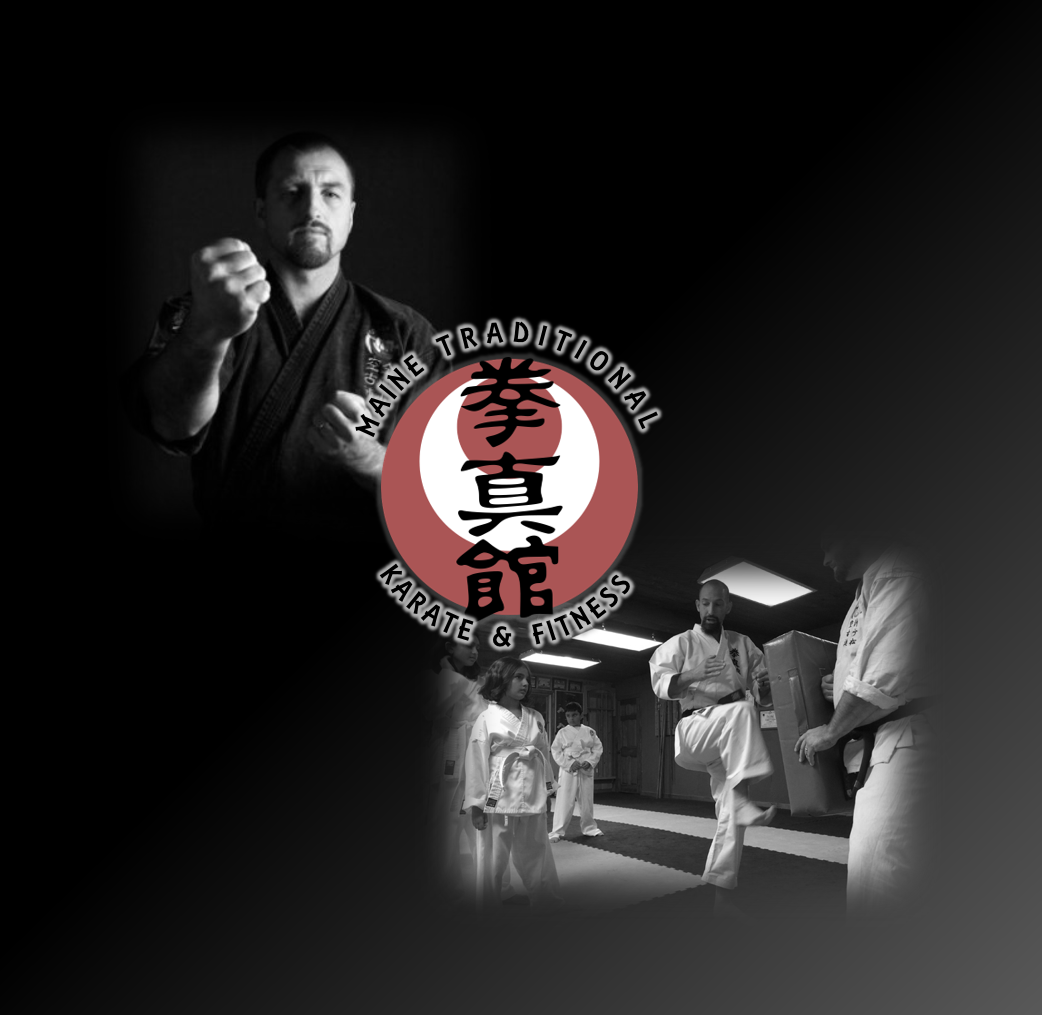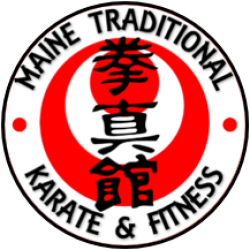Karate is a wonderful family endeavor. Several parent-child pairs, including myself and my son, train at the Maine Traitional Karate Dojo. My wife, Sue, also enjoys coming to class from time to time to watch her boys beat on each other. We have a relatively new father-son pair who train primarily at our Old Town Dojo, but also come to the Main Dojo in Orrington. The younger attends the youth class from 5:30 -6:30 pm and then observes as his father attends the adult class. They are both enthusiastic and skilled practioners. I look forward to learning with and from both of them for years to come.
A couple weeks ago, the young man mentioned above, likely unaware of who Sue was, carefully observed and practiced the techniques being taught to his father on the dojo floor. The young man excitedly displayed the new moves he had watched his father learn. Sue gently mentioned to the boy that she was glad he was enjoying himself but that he really should not be practicing material above his rank that he has not yet been taught by his instructor.
Now what you need to understand is that Sue was not trying to be a witch, nor something that closely rhymes with it. She was absolutely correct. Unless approved by the Sensei, a student really should not be practicing material that they have not yet been formally taught. There are several reasons for this. For example, learning of advanced techniques is often predicated upon mastery of earlier techniques. Advanced techniques, which can be dangerous if not deadly, are only introduced at a point in training when the student has demonstrated appropriate respect for the knowledge and the self-control necessary to ensure the safety of all involved (except of course for a real attacker intent on harming the Karateka).
Last week before class, I was working with a Green Belt on a new technique he had been taught. It is from a kata (form) called Pinan Sandan. Visualize being really mad at someone and standing with your feet together with your hands on your hips, elbows out. The technique kind of starts like that. It then involves stepping and twisting at the waist, bringing the elbow across your body and then transitioning into something else. Out of the corner of my eye, I caught the young student mentioned above watching very closely what the other adult student and I were doing.
I did something not very nice.
Knowing I was being watched, I purposely dropped my shoulder as I demonstrated a move. My rendition caused my head and neck to come forward and be lowered. Think about that. If you have someone intent on hitting you with an uppercut or kicking you hard, what do you think is going to happen if you bend at the waist and lower your head forward? You don’t have to be a student of karate to know you might as well put on your football shaped hat because your face I about to get kicked right through the goal posts.
I must have been good at demonstrating badly because the adult student with whom I was working looked at me with a “what the H-E double hockey sticks are you doing” expression and asked “am I supposed to be dipping my shoulder like that?” A little embarrassed for forgetting that one set of eyes upon me was supposed to be learning, I just said quietly, “no, no. Sorry, I was just exaggerating.”
Sure enough, after class the young student excitedly exclaimed that he had learned three of the moves from the kata mentioned above. One of the advanced students reminded the young student of a discussion they had had about not trying to demonstrate techniques that he has not yet been taught. Undeterred, the student went on to demonstrate hands on hips, twist while dipping his shoulder much to far. The student’s father interrupted the demonstration by reiterating what the other adult had just said and by noting, “you’re not even doing it correctly.”
The student looked up at me for validation. He found none. “Nope, you’re Dad is correct. You’re not.” You could see the wind come right out of his sails. “But,” I continued “I love the enthusiasm. Don’t ever lose that. I can tell you’re going to be awesome because you’ve got great enthusiasm and heart. Your teacher is the same way (he is). Keep the enthusiasm and learn what you’re taught and you will go a long way wth your teacher and our dojo.”
Only recently have I come to realize the wonderment that is the journey we call karate-do. Hundreds of years of history to read about and learn from; katas that hold the key to techniques that I am only beginning to understand, a dojo family where one can watch how adults and children alike grow in meaningful ways. I know such statements may sound like some kind of hokey baloney, but the realization that karate-do truly is an effective means for self-actualization hit me right between the eyes during our last testing on January 23. After testing, my Sensei gave me the most positive feedback I had ever received from him – “Shawn, that’s about the most relaxed I have ever seen you in the dojo.”
I can’t really explain the feeling. It wasn’t that my technique was exceptionally majestic or relief that I had made it through a demanding workout without blowing chunks all over my instructors. I just had an amazing feeling of … belonging. Maybe not even belonging so much as a feeling that, at that very moment, I was exactly where I was supposed to be.
Buddhists call it mindfulness. Don’t spend so much time and effort trying to get where you think you are going that you miss where you are. If you have such enthusiasm that you feel as if you will burst without constantly having something new to learn, take the time to read about Okinawan culture, the history of both Te and Karate, or research why and how a select group of individuals affected history by promoting the kanji for karate to be written as “Empty Hand” versus “China Hand.” Consider the character that is involved with our Grandmaster having to live in caves and scavenge for food to avoid starvation, in part due to actions by the Unites States, and yet still be willing to share his gifts and knowledge with Americans. Thoroughly ponder the katas already learned, think about why techniques work, why material is presented in a particular fashion, and what may be hidden within that which you already know.
As the father of Shotokan Karate, Gichin Funakoshi, once wrote “You may train for a long time, but if you merely move your hands and feet and jump up and down like a puppet, learning karate is not very different from learning a dance. You will never have reached the heart of the matter; you will have failed to grasp the quintessence of karate-do.”
Need to hear it from within our own lineage?
In a 1978 interview with Hohan Soken, interviewer, Ernie Estrada, asked “Sensei, any recommendations for us — Americans?”
Master Soken minced no words:
Yes, but you won’t like it! Americans want to learn too much, too fast. You want more this and more that. You have a life time to learn. Learn slowly. Learn correctly. Look. Listen. Practice, practice, practice. Don’t be a rash American, but a smart American. Never be in a hurry to learn, OK? Learning in a hurry can cause pain. Do you know about pain? Let me show you!
For any who may be reading, there is indeed more than a lifetime of material out there to learn – all of it valuable to living deliberately.
Oh, and to the young student of whom I write above, when you’re not practicing the technique you’re not supposed to know, be sure not to drop your head, neck and shoulders. It’s a tough way to learn the lesson about pain of which Master Hohan Soken spoke.

